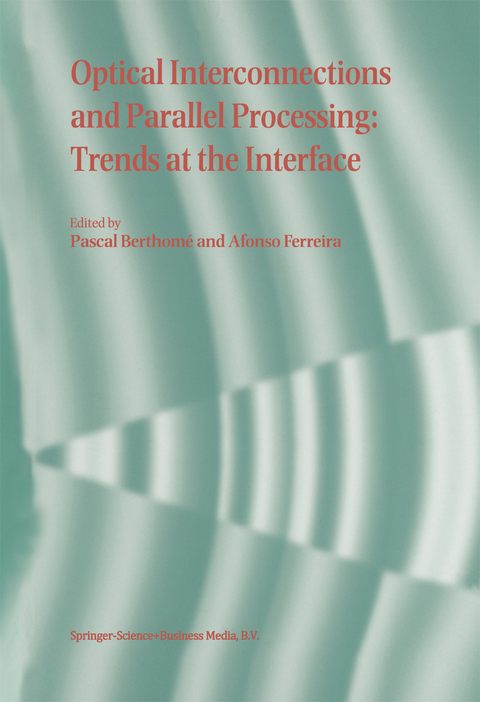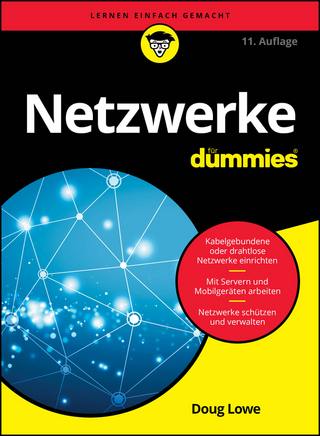
Optical Interconnections and Parallel Processing
Springer-Verlag New York Inc.
978-1-4419-4782-6 (ISBN)
Audience: The book will be a vital resource for researchers and graduate students of optical interconnects, computer architectures and high-performance computing and communication systems who wish to understand the trends in the newest technologies, models and communication issues in the field.
1 Levels of Abstraction in Computing Systems and Optical Interconnection Technology.- 1 Introduction.- 2 Levels of abstraction in problem solving.- 3 Alternative systems of levels of abstraction for general purpose computing?.- 4 General purpose systems versus special purpose systems.- 5 Introducing optics into general purpose systems.- 6 Discussion.- 7 Conclusions.- 2 Smart-Pixel Technology Current Status and Future Trends.- 1 Introduction.- 2 Smart-Pixel Technology.- 3 Basic considerations.- 4 The bitonic sorter.- 5 Future Trends.- 6 Potential Application.- 7 Conclusion.- 3 Energy Requirement and Speed Analysis of Electrical and Free-Space Optical Digital Interconnections.- 1 Introduction.- 2 Assumptions.- 3 Definition of Interconnection and Estimation of Energy.- 4 Speed and Energy of Off-Chip Electrical Interconnections.- 5 Speed and Energy of On-Chip Electrical Interconnections.- 6 Optical Interconnections.- 7 Effects of Technology Scaling.- 8 Conclusions.- 4 Low Latency Asynchronous Optical Bus for Distributed Multiprocessor Systems.- 1 Introduction.- 2 Organization of the optical bus.- 3 30-100 Gb / s Optical Bus with full electronic packet processing.- 4 0.5–1 Tb / s Optical bus with photonic gates.- 5 Conclusion.- 5 Optical Free-Space Interconnections Inside Parallel Architectures: Oneracert Activities.- 1 Introduction.- 2 Time and Space Multiplexing.- 3 The MILORD Architecture.- 4 The OEDIPE Architecture.- 6 Massively Parallel Computers Using Optical Interconnects — The Synoptique Project —.- 1 Introduction.- 2 Description of Sympati2 and Symphonie.- 3 Limitations of the Electrical Interconnections.- 4 Synoptique project.- 5 Conclusion and future work.- 7 Optical Array Logic Network Computing: Concept and Implementation.- 1 Introduction.- 2 Optical ArrayLogic.- 3 OAL-NC Architecture.- 4 Implementation of OAL-NC.- 5 Multiple Process Embodiment.- 6 Possible OAL-NC System Construction.- 7 Summary.- 8 Towards Effective Models for Optical Passive Star Based Lightwave Networks.- 1 Introduction.- 2 OPS—based networks.- 3 Stack-graphs.- 4 Modeling OPS—based networks.- 5 Applying the models.- 6 Conclusions and directions for further research.- 9 Embedding Properties of Reconfigurable Partitionable Optical Networks.- 1 Introduction.- 2 The “Hyperplane” Reconfigurable Optical Backplane.- 3 Graph and HyperGraph Models for Bus-Based Optical Networks.- 4 A Model for Reconfigurable Partitionable Optical Interconnects.- 5 Combinatorial Optimization Problems Encountered in the Optical Embeddings.- 6 Embeddings of Meshes.- 7 Conclusions.- 10 Time Division Multiplexed Control of All-Optical Interconnection Networks.- 1 Introduction.- 2 Circuit Switching Techniques.- 3 Cost of Communication in TDM Networks.- 4 Communication Cost in Looping Programs.- 5 Conclusions.- 11 Bounds and Analysis Techniques for Greedy Hot-Potato Routing.- 1 Introduction.- 2 The Model, Terminology, Definitions and Preliminaries.- 3 The Potential Function Analysis: Priority to Restricted Packets.- 4 Priority to Inertial Packets.- 5 Optimal Single-Target Routing on the 2-Dimensional Mesh.- 6 Randomized Single-Target Routing on Higher Dimensional Meshes.- 7 Greedy Routing of Permutations Can be Hard.- 8 Conclusions.- 12 Models for Optically Interconnected Networks.- 1 Introduction.- 2 Switching techniques.- 3 Topologies: from graph to hypergraph models.- 4 Collective communications.- 5 Introducing optical communications in general models of parallelism.- 6 Conclusion.
| Erscheint lt. Verlag | 3.12.2010 |
|---|---|
| Zusatzinfo | XX, 394 p. |
| Verlagsort | New York, NY |
| Sprache | englisch |
| Maße | 170 x 244 mm |
| Themenwelt | Mathematik / Informatik ► Informatik ► Netzwerke |
| Mathematik / Informatik ► Informatik ► Theorie / Studium | |
| Naturwissenschaften ► Physik / Astronomie ► Elektrodynamik | |
| Naturwissenschaften ► Physik / Astronomie ► Optik | |
| Technik ► Elektrotechnik / Energietechnik | |
| ISBN-10 | 1-4419-4782-5 / 1441947825 |
| ISBN-13 | 978-1-4419-4782-6 / 9781441947826 |
| Zustand | Neuware |
| Informationen gemäß Produktsicherheitsverordnung (GPSR) | |
| Haben Sie eine Frage zum Produkt? |
aus dem Bereich


